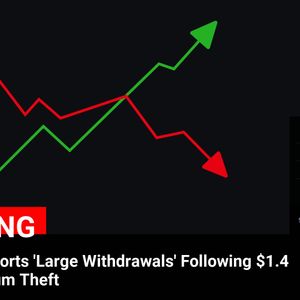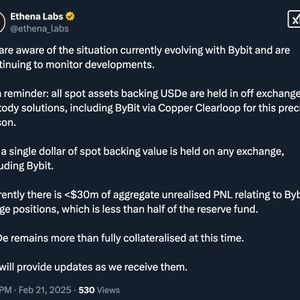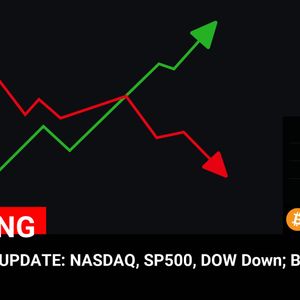In a surprising turn of events, the Mexican Peso has showcased remarkable resilience, surging for six consecutive days and seemingly shrugging off the Federal Reserve’s (Fed) attempts to maintain a restrictive monetary policy. This defiance comes amidst warnings from Fed officials about stalled disinflation and forecasts of an economic slowdown in Mexico, painting a complex picture for the USD/MXN exchange rate. But can this bullish momentum in the Mexican Peso truly last? Let’s delve into the factors driving this unexpected strength and what it means for traders. Mexican Peso Gains Momentum: A Deep Dive Despite a chorus of hawkish voices from the Federal Reserve signaling a cautious approach to easing monetary policy, the Mexican Peso (MXN) has continued its upward trajectory. This impressive performance is fueled by a generally positive market sentiment that favors risk-sensitive currencies. As of the latest update, the USD/MXN pair is trading at 20.22, reflecting a 0.27% decrease, highlighting the Peso’s strength. Several key factors are at play here: Global Risk Appetite: A prevailing upbeat mood in the market is boosting riskier assets, and the Mexican Peso, being considered a risk-sensitive currency, is benefiting from this trend. Anticipation of Banxico Rate Cuts: While the Fed is holding firm, expectations are building that Banco de Mexico (Banxico), Mexico’s central bank, might be considering significant interest rate cuts, potentially up to 50 basis points. Paradoxically, in the short term, this anticipation doesn’t seem to be deterring MXN strength. Upcoming Economic Data: Traders are keenly awaiting upcoming economic data releases from Mexico, including Retail Sales figures and Q4 GDP data, as well as the minutes from Banxico’s last meeting. These data points could offer crucial insights into the health of the Mexican economy and Banxico’s future policy direction. Will Fed Policy Restraints Dethrone the Mexican Peso’s Rise? Federal Reserve officials have recently adopted a more cautious tone, emphasizing the need for sustained restrictive policies to combat persistent inflation. San Francisco Fed President Mary Daly explicitly stated that policy needs to remain restrictive until there is clear evidence of continued progress on inflation. This hawkish stance, typically supportive of the US Dollar, seemingly has not yet curbed the Mexican Peso’s advance. Key Fed officials’ comments include: Mary Daly (San Francisco Fed President): Emphasized the need for continued restrictive policy until sustained progress on inflation is evident. Christopher Waller (Fed Governor): Downplayed the potential inflationary impact of former US President Donald Trump’s new trade restrictions, suggesting a modest effect on prices. Patrick Harker (Philadelphia Fed President): Supported maintaining a steady interest-rate policy, citing persistent elevated inflation in recent months. Despite these hawkish signals, the market appears to be pricing in a different scenario, as indicated by the December 2025 fed funds futures contract. Swaps markets suggest expectations of approximately 39 basis points of rate cuts by the Fed towards the end of the year. This divergence in expectations between the Fed’s rhetoric and market pricing adds an intriguing layer of complexity to the USD/MXN dynamic. Banxico’s Next Move: Rate Cuts on the Horizon? All eyes are on Banxico as investors seek clues from the upcoming minutes of its last meeting regarding potential interest rates cuts. The market is particularly interested in gauging the likelihood of a 50 basis point rate cut pace throughout the year. Such aggressive rate cuts, if implemented, could have significant implications for the Mexican Peso and the USD/MXN pair. Key questions surrounding Banxico’s policy: Pace of Rate Cuts: Will Banxico opt for a gradual or aggressive approach to cutting interest rates? A 50 bps cut pace would be considered aggressive. Inflation Targets: How concerned is Banxico about inflation, and how will this influence their rate-cutting decisions? Economic Slowdown: To what extent will concerns about a potential economic slowdown in Mexico influence Banxico’s monetary policy stance? The answers to these questions will be pivotal in shaping the future trajectory of the Mexican Peso . USD/MXN Technical Outlook: Will the Peso Maintain its Grip? From a technical perspective, the USD/MXN pair is currently navigating a crucial juncture. It is testing the 100-day Simple Moving Average (SMA) around 20.24. A decisive break and daily close below this level could pave the way for a further descent towards the psychological level of 20.00. However, it’s not a one-way street. If the USD/MXN pair manages to climb above the 50-day SMA at 20.45, it could trigger a rally towards 20.50, with the next major resistance level at the January 17 daily high of 20.93. The Relative Strength Index (RSI) currently indicates a bearish sentiment, but its flat slope suggests a lack of strong momentum from either buyers or sellers. This indecision highlights the uncertainty in the near-term direction of the USD/MXN pair. Trade Tensions: A Looming Risk for the Mexican Peso? While not immediately in the spotlight, simmering trade disputes between the US and Mexico remain a potential risk factor for the Mexican Peso . Although previous disagreements have been navigated, a 30-day pause is in effect, and tensions could resurface towards the end of February. Any escalation in trade tensions could negatively impact the Mexican Peso and introduce volatility into the USD/MXN pair. Frequently Asked Questions about Banxico and the Mexican Peso What is the Bank of Mexico (Banxico)? Banxico is Mexico’s central bank, responsible for maintaining the value of the Mexican Peso and setting monetary policy. Its primary objective is to keep inflation low and stable, targeting 3% with a tolerance band of 2% to 4%. How does Banxico’s monetary policy affect the Mexican Peso? Banxico uses interest rates as its main tool. Raising rates combats inflation by making borrowing more expensive, which is generally positive for the Mexican Peso due to higher yields attracting investors. Conversely, lower rates tend to weaken the MXN. The interest rate differential between Banxico and the Fed is a crucial factor influencing the USD/MXN exchange rate. How often does Banxico meet? Banxico convenes eight times a year, typically a week after the Federal Reserve meetings. This allows Banxico to react to and sometimes anticipate Fed policy decisions. For instance, Banxico raised rates before the Fed during the post-pandemic period to mitigate potential Peso depreciation and capital outflows. Conclusion: A Test of Resilience for the Mexican Peso The Mexican Peso’s recent strength in the face of a hawkish Fed and looming economic data is a testament to its current resilience. However, the path ahead is fraught with uncertainties. Banxico’s upcoming policy decisions, the evolution of US-Mexico trade relations, and shifts in global risk sentiment will all play a crucial role in determining whether the Peso can sustain its momentum . Traders should closely monitor these factors to navigate the potential volatility in the USD/MXN market. To learn more about the latest Forex market trends, explore our articles on key developments shaping currency valuations and global economic policies.



















